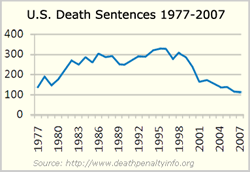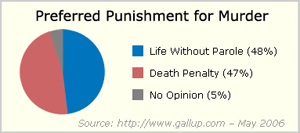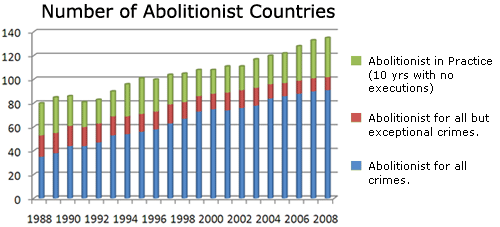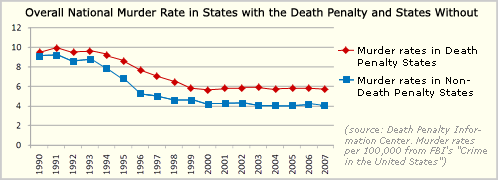
- •The us Judiciary
- •The federal courts
- •The civil and criminal courts
- •Insert necessary words and expressions: Legal System Laws and Courts in the us
- •The us Judiciary
- •The federal courts
- •The civil and criminal courts
- •Capital Punishment in the usa
- •Death Penalty Trends
- •Death Penalty Cost
- •Executions by State in the u.S.
- •November 24, 2009
- •Methods of Execution in the u.S.
- •Books and reading
- •The 2008 Teens’ Top Ten
- •What Is Marriage (test)
- •Love and Support Through the Years
- •Sickness and Death
- •Dividing the Work
- •Finances
- •Your Nest
- •Religion
- •Politics
- •Sleeping
- •Hobbies and Vacations
- •Children
- •When You Were a Child
- •Prior Experience
- •Quantity and Characteristics
- •Infertility
- •Adoption
- •Raising Kids
- •What Do You Do When?
- •8 Reasons Why You Should Get a Prenuptial Agreement a prenuptial agreement is an agreement between two people that deals with the financial consequences of their marriage ending.
- •What Can & Can’t Be In a Prenuptial Agreement
Capital Punishment in the usa
Since 1977, over 1,100 people have been executed in the U.S.; there are currently around 3,300 men and women on death row across the country. Grassroots activists throughout the USA play an essential role in advocating against this human rights violation through monitoring cases, mobilizing around upcoming events, and lobbying for anti-death penalty legislation.


Death Penalty Trends
Public support for the death penalty is diminishing in the U.S. Roughly half the U.S. public now prefers life without parole over the death penalty as the best punishment for the crime of murder.
Annual death sentences in the U.S. have dropped dramatically since the year 2000. In the last two years the number of death sentences has been lower than any time since reinstatement of the death penalty in 1976.
Executions have declined as well, from a high of 98 in 1999, to 53 in 2006, to just 42 in 2007 and just 37 in 2008.
International Abolition: in 1977, just 16 countries had abolished the death penalty for all crimes. By 1988, 35 countries had done so and another 18 had abolished the death penalty for all but exceptional crimes like treason, and 27 more were considered abolitionist in practice because they had not carried out an execution in over 10 years. As of June 2009, 139 countries were abolitionist in law or practice.

Examples of wrongful convictions
Arizona: Ray Krone, released in 2002
Spent 10 years in prison in Arizona, including time on death row, for a murder he did not commit. He was the 100th person to be released from death row since 1973. DNA testing proved his innocence.
Illinois: Madison Hobley, Aaron Patterson, Stanley Howard and LeRoy Orange, pardoned in 2003
Sent to death row on the basis of "confessions" extracted through the use of torture by former Chicago Police Commander Jon Burge and other Area 2 police officers in Chicago. They were pardoned by outgoing Governor George Ryan, who also commuted the remaining 167 death sentences in Illinois to life imprisonment.
North Carolina: Jonathon Hoffman, exonerated in 2007
Convicted and sentenced to death for the 1995 murder of a jewelry store owner. During Hoffman's first trial, the state's key witness, Johnell Porter, made undisclosed deals with the prosecutors for testifying against his cousin. Porter has since recanted his testimony, stating that he lied in order to get back at his cousin for stealing money from him.
Factors leading to wrongful convictions include:
Inadequate legal representation
Police and prosecutorial misconduct
Perjured testimony and mistaken eyewitness testimony
Racial prejudice
Jailhouse "snitch" testimony
Suppression and/or misinterpretation of mitigating evidence
Community/political pressure to solve a case
Death Penalty Cost
"Using conservative rough projections, the Commission estimates the annual costs of the present system ($137 million per year), the present system after implementation of the reforms ... ($232.7 million per year) ... and a system which imposes a maximum penalty of lifetime incarceration instead of the death penalty ($11.5 million)."
Recent Cost Studies
A 2003 legislative audit in Kansas found that the estimated cost of a death penalty case was 70% more than the cost of a comparable non-death penalty case. Death penalty case costs were counted through to execution (median cost $1.26 million). Non-death penalty case costs were counted through to the end of incarceration (median cost $740,000). (December 2003 Survey by the Kansas Legislative Post Audit)
In Tennessee, death penalty trials cost an average of 48% more than the average cost of trials in which prosecutors seek life imprisonment. (2004 Report from Tennessee Comptroller of the Treasury Office of Research)
In Maryland death penalty cases cost 3 times more than non-death penalty cases, or $3 million for a single case. (Urban Institute, The Cost of the Death Penalty in Maryland, March 2008)
In California the current sytem costs $137 million per year; it would cost $11.5 million for a system without the death penalty. (California Commission for the Fair Administration of Justice, July 2008)
The greatest costs associated with the death penalty occur prior to and during trial, not in post-conviction proceedings. Even if all post-conviction proceedings (appeals) were abolished, the death penalty would still be more expensive than alternative sentences.
Trials in which the prosecutor is seeking a death sentence have two separate and distinct phases: conviction (guilt/innocence) and sentencing. Special motions and extra time for jury selection typically precede such trials.
More investigative costs are generally incurred in capital cases, particularly by the prosecution.
When death penalty trials result in a verdict less than death or are reversed, taxpayers first incur all the extra costs of capital pretrial and trial proceedings and must then also pay either for the cost of incarcerating the prisoner for life or the costs of a retrial (which often leads to a life sentence).
The murder rate in non-Death Penalty states has remained consistently lower than the rate in States with the Death Penalty.

The threat of execution at some future date is unlikely to enter the minds of those acting under the influence of drugs and/or alcohol, those who are in the grip of fear or rage, those who are panicking while committing another crime (such as a robbery), or those who suffer from mental illness or mental retardation and do not fully understand the gravity of their crime.
